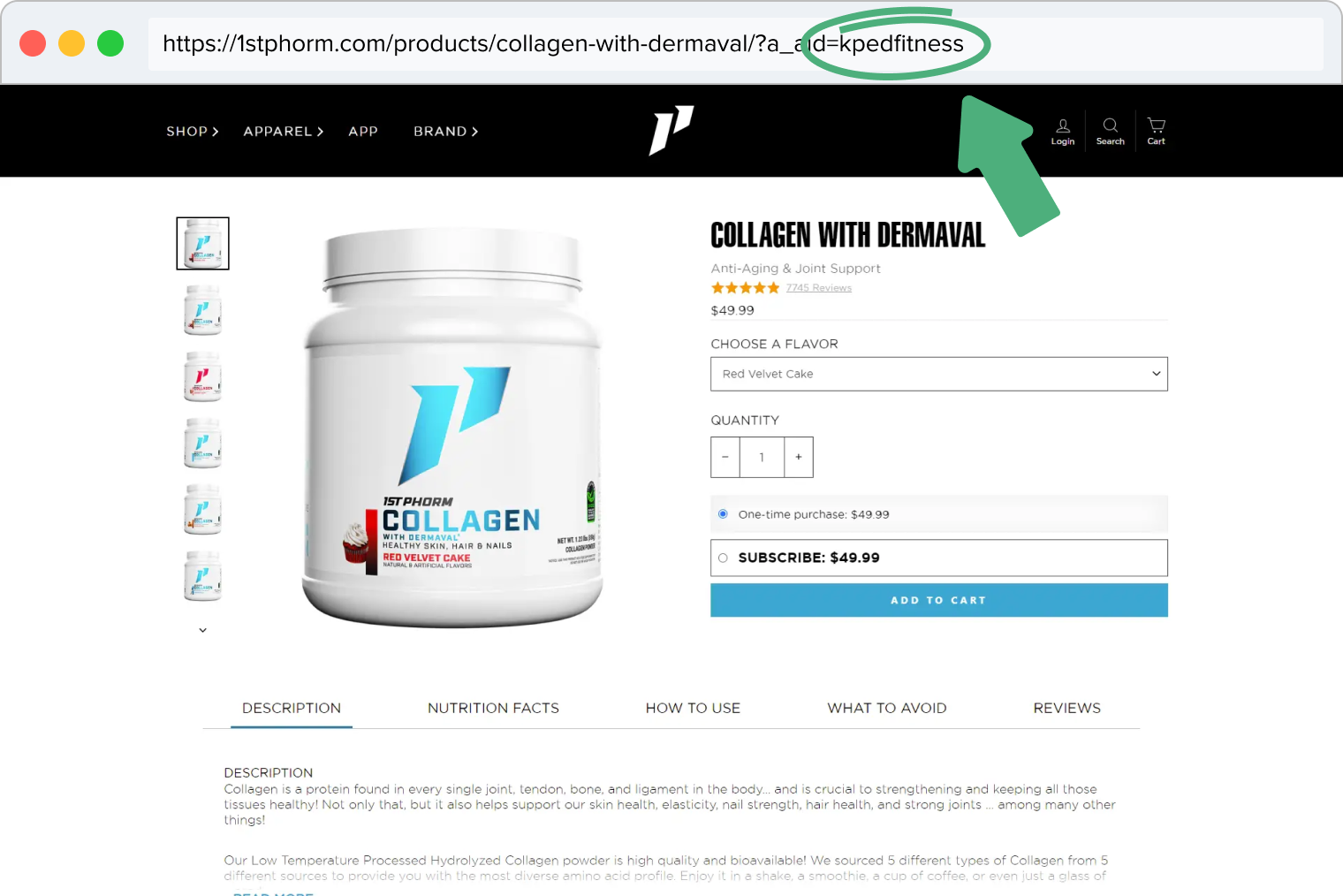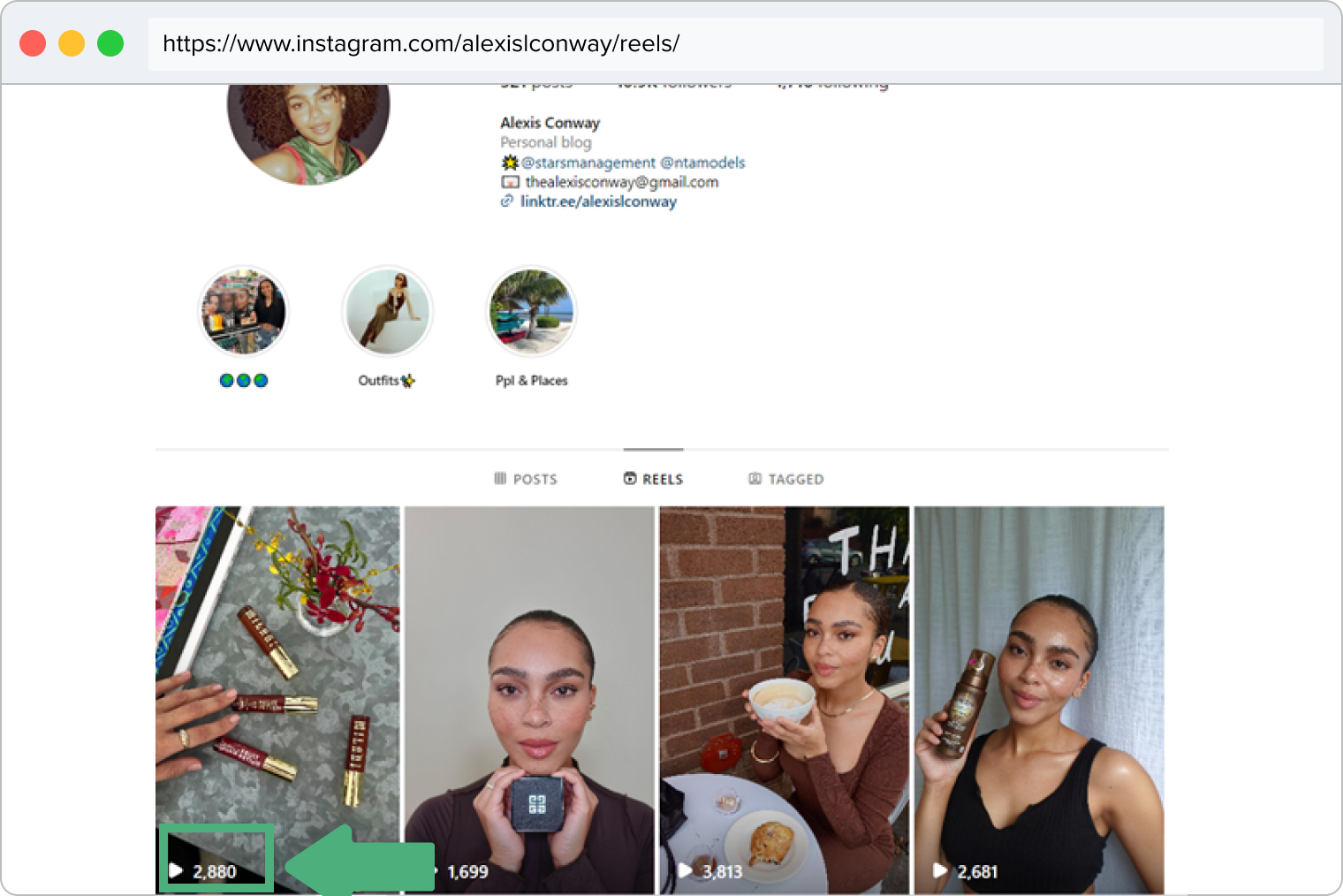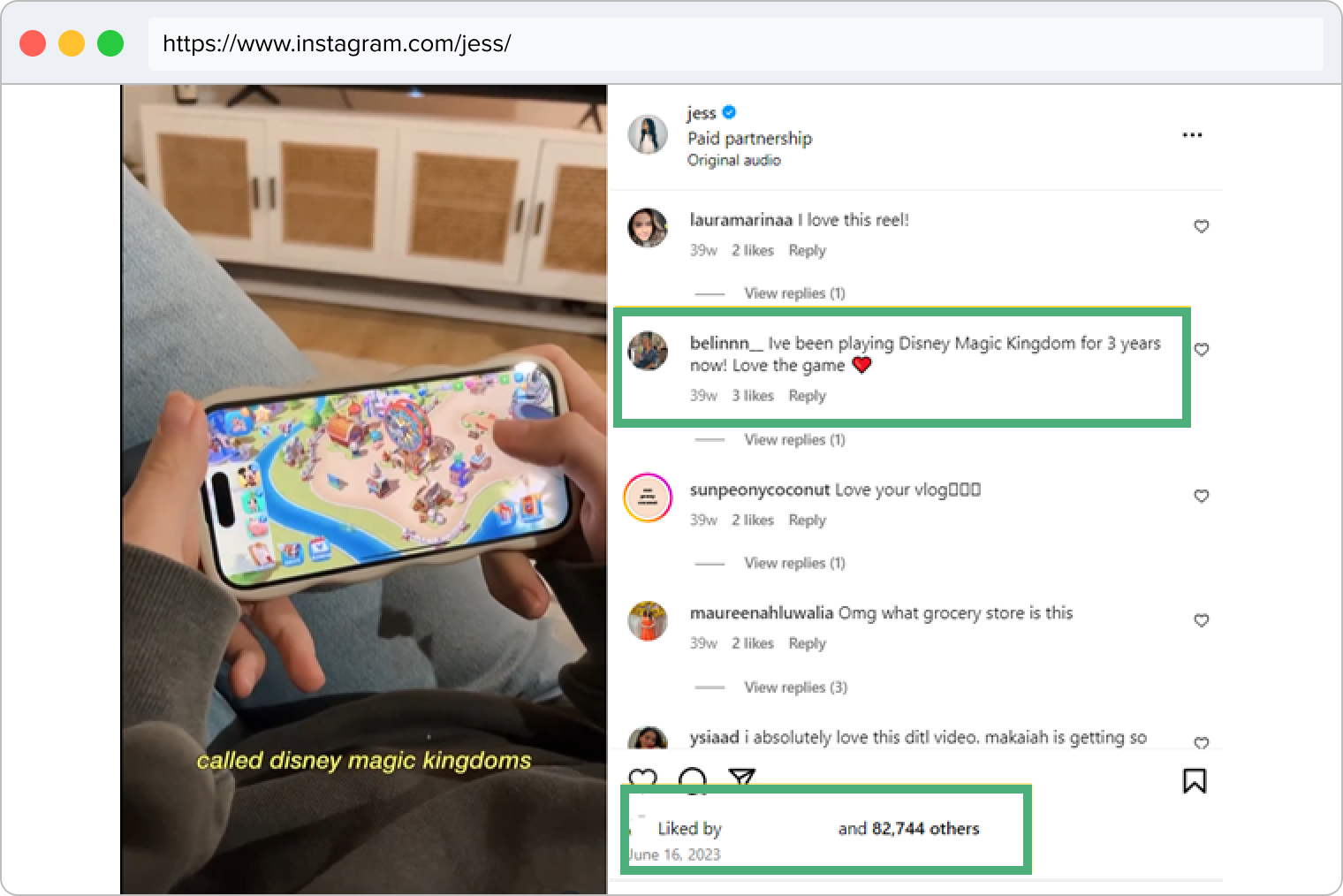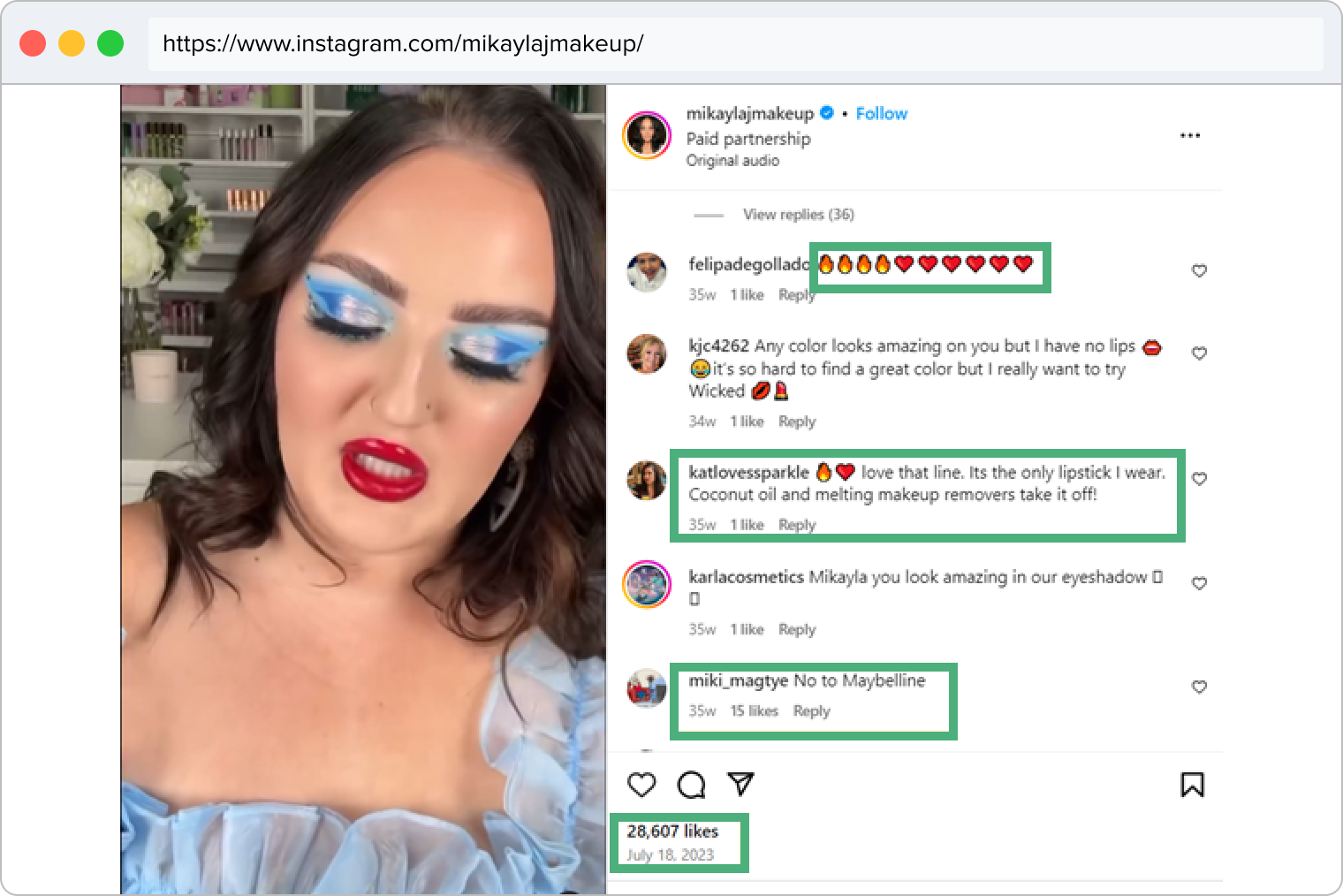Free Influencer Marketing Series
Success! Enjoy the series Part 1: How an agency took a brand from 0 to $1MM in 4 months using influencers & ads
Free Influencer Marketing Series
Success! Enjoy the series Part 1: How an agency took a brand from 0 to $1MM in 4 months using influencers & ads

Drive sales? Reach a new audience? Get people talking about your brand? Whatever you want to achieve with your influencer campaigns, you’ll need to have a clear goal in mind. But it’s a minefield out there—fake followers, engagement pods, and “like-for-like” initiatives can muddy the waters when it comes to measuring and tracking your true campaign results.
This is why it’s never been more important to have goal-oriented influencer marketing key performance indicators (KPIs) before you choose your influencers, approve creatives, and push content out into the world. Choosing the right KPIs can help you understand what’s working and what’s not so you can make strategic decisions, optimize your campaigns, and ensure each influencer is delivering a strong ROI.
An influencer marketing KPI (key performance indicator) is a quantifiable metric that helps you track the success of a specific influencer marketing campaign goal. It helps you make business decisions based on campaign and influencer data so you can invest your marketing budget wisely in future campaigns.
With consumers craving authenticity, influencers have become conscious of the type of partnerships they take up. At the same time, brands and agencies need to track the results of each partnership to see whether it’s fruitful or not. For both sides to win, there needs to be clear expectations (a goal) and proof that a partnership is effective (results).
We’ve noticed that many brands kickstart their influencer relationships with product seeding.
This is the process of sending free product samples to influencers without any expectation of them posting about it on their social channels (but with the hope that they will). The goal is to develop relationships with relevant influencers, identify who your true fans are, and cherry-pick the best affiliates for your campaigns.
Yet if you’re seeding products but not keeping track of influencer-generated content, you can miss creative opportunities and the chance to form deep relationships with influencers.
As those relationships develop, it’s important to track how many creative assets are produced, how many influencers go on to become affiliates, and how many sales are attributed to each affiliate. Only then can you determine which influencers have the biggest impact on your campaigns.
The bottom line: there are a lot of moving parts to keep track of in any influencer marketing campaign. KPIs will help you understand what strategies work and what don’t. Based on your results, you can double down on winning strategies, find better influencers, and identify loyal fans for your brand.
Based on the most common campaign objectives, here are some KPIs to track your influencer marketing success.
Best for tracking: Sales
Conversions are a straightforward KPI to track if your campaign goal is to increase overall sales.
Measuring conversions and attributions is one of the toughest jobs for ecommerce shops. This is where Urchin Tracking Module (UTM) links and affiliate codes and links help. Make sure you include them in your influencer marketing strategy before a campaign goes live so the attribution can be as accurate as possible.
Best for tracking: Brand awareness
Direct conversions and sales don’t give you the full picture of a campaign’s impact—especially if driving sales isn't a current social media goal of yours.
This is why some brands look to referral traffic—a.k.a. website traffic driven by influencers. If referral traffic is high but conversions are low, it can indicate a problem with your website—maybe your messaging is wrong or there’s a disconnect between the influencer-generated content and your products. Plus, you can attribute referral traffic to individual influencers so you can find out who’s bringing you the biggest ROI.
Notice here how micro-influencer Kristen Pedersen links to a DTC protein powder:

The link leads to the following address:

Best for tracking: Brand awareness
While reach and awareness are often deemed vanity metrics and don’t tell the full story about your campaign, they’re important metrics for certain goals, such as increasing brand awareness during a new launch.

Best for tracking: Social media growth and brand awareness
Think of audience growth as a 'conversion' metric if your influencer marketing campaign goal is social platform growth.
Campaign reach tells you how many people saw a particular piece of content. The hard part is knowing whether these people match your target audience. This is where audience growth comes into play because it calculates how many people decide to follow you after seeing a post from an influencer. To calculate your audience growth, compare the number of impressions with the number of new followers. If it's significantly lower than industry standards, you might need to tweak the campaign.
Best for tracking: Social media growth and brand image
Engagement is often dubbed another vanity metric—particularly if your goal is to drive sales—but it can also tell you how much your campaigns resonate with your target audience.
Engagement includes the number of likes, comments, saves, and shares on your influencer posts. Among these, comments will give you the most information because they tell you what your audience thinks about your brand and the influencer promotion.

Best for tracking: Sales
Click-through rate (CTR) is the number of times your audience has clicked on a link. This KPI can tell you a variety of things:
If an influencer gives you a high CTR, it indicates the campaign’s messaging and the CTA are strong.
If the CTR is high but the conversions are lower than expected, you might need to tweak your website, landing page, or product offering.
A low CTR reflects an audience mismatch, a badly chosen influencer, or weak messaging.
Best for tracking: Brand image and awareness
Brand sentiment or social sentiment is the audience's reaction towards your brand once the campaign is live. You can gauge this sentiment by analyzing the comments. Look for reaction emojis, mentions of friends, hashtags, and more.
While it’s a time-consuming analysis, this will tell you what to tweak in upcoming campaigns. It’s honest and direct feedback from your audience (but it only works if you get your choice of influencer right).
Key performance indicators, as the name suggests, indicate the performance of your campaign. But a campaign falls flat without having a goal to stand on. Think of the goal as the cornerstone of your campaigns. If you choose the wrong goals (or worse, no goals at all), you’ll struggle to tell whether it’s working—or, more importantly, what’s working and what’s not.
For example, likes and reach can be seen as “vanity metrics”. However, if your campaign goal is to reach new people and increase brand awareness, you might keep a close eye on these metrics to determine how many people have seen your brand and products. This means that what might be unnecessary for someone could be the most important metric for your unique goal.
Here’s a rundown of the KPIs to choose based on your goals.
Engagement tells you how well-received your brand is by your influencers’ audiences. Engagement can also give you an estimate of potential new leads. What’s more, it’s a good indicator of your brand and influencer fit.
Here are some KPIs to measure engagement:
Comments
Shares
Saves
Mentions of friends
Likes
Branded hashtag usage
Reactions

If your influencer campaign goal is to increase brand awareness and visibility, you need to track KPIs associated with reach. Here are the metrics to track:
Growth in your follower count
Individual post reach
Post impressions
Website traffic
Conversions don’t always refer to a sale. Based on your business and campaign goals, a conversion can also mean a newsletter sign-up or an ebook download.
You also need to pay close attention to individual conversion rates coming from each influencer and content piece. Based on that, you can make better investment decisions for the next campaign. You can do this by tracking UTM links, affiliate links, and affiliate codes.
If a particular content piece generates excellent conversions, you can feed it into your ads engine (after getting the influencer's permission).
Measuring conversions become more straightforward when they're tied to a direct number:
Number of sales (or downloads and signups)
Click-through rate (CTR)
There are two ways to track your KPIs: manual and automation.
One way to track your KPIs is manually in a spreadsheet. You’ll have to:
Track custom UTM links of every influencer
Track engagement on every influencer post
Ask influencers for screenshots of reach and impressions
Track your sales manually
Track promo code usage
Track website visits
...and all the other KPIs.
This can take your team hours (or even days) and requires them to be “on” all the time so they don’t miss a Story or relevant post. Obviously, this isn’t sustainable and can lead to burnout, as well as a loss of time that could be spent on other activities that move the needle.
Tracking KPIs manually isn’t the most productive use of your team’s time. It’s time-consuming and ripe for human error.
This is where a tool like MightyScout comes in.
From keeping track of sales through integrations to your commerce platform, to impressions, you can see every piece of data about your entire influencer marketing program in a centralized dashboard. You don’t need to follow up with the influencers for screenshots of metrics or spend hours on countless spreadsheets. Instead, every post, Story, and promotion automatically gets pulled into your account where you can see it, track it, and measure it.

While conversions are an important KPI, what’s more important is understanding why your conversion rate is high or low. MightyScout gives you an in-depth picture of what’s going on in one single pane of glass, which means you can analyze your KPIs quickly and effectively and tweak your campaigns as needed.

The best influencer marketing KPI is the one that aligns with your goal. For example, if your goal is to drive sales, use KPIs like conversion rate, click-throughs, and sales. But if your goal is to increase brand awareness, track likes, comments, shares, and saves.
You can measure the performance of your influencer campaigns in different ways depending on your goals. Track post impressions, likes, comments, and shares, or measure conversion-focused metrics like sales and click-throughs.
No influencer marketing campaign is successful from the get-go. It takes multiple iterations, a keen understanding of audience sentiment, and a deep analysis of previous campaigns to get to a point where you’re consistently hitting (and exceeding) your goals.
It gets even more complicated when you add multiple influencers to the mix, as well as paid and unpaid partnerships. You need to keep track of sales and traffic, but you also need to analyze the performance of each influencer’s content.
Choosing KPIs that are aligned with your overall goals will help you iterate what content works best, which influencers perform best, and help you reduce ad costs through proof of concept. As a result, you can lower acquisition costs (CAC) and get more sales.
MightyScout can help you automate your entire influencer marketing KPI tracking and create downloadable reports for you. Request a demo today to learn more.